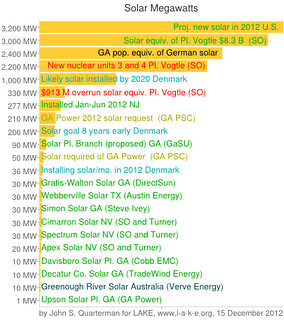Our Industrial Authority is in favor of solar business now; what if they seeded some of their industrial parks with solar panels like Decatur County is doing? They think it will make them look like a progressive county. What do we think?
Ty Wilson wrote for WTXL 7 Dec 2012, A solar park is coming to the Decatur County Industrial Park,
The Decatur County Industrial park will go from having green grass to having a green future.
A Lenexa, Kansas company is building a solar farm at the Decatur County Industrial Park.
The Decatur County Industrial park will go from having green grass to having a green future.
Keith Lyle is the chairman of the Bainbridge Decatur Development Authority, he says, “We are just extremely excited to have this come for the community.”
Trade Winds Energy is leasing at least 100 acres to put in solar panels at ten thousand dollars a year.
Company executives says they will invest 17 million dollars into the project.
Lyle says, “This will add from the tax aspect a significant revenue stream. When it is all said and done you are looking at a taxable amount of 40 million is assets. On the project that is 400 hundred thousand a year in tax revenue.”
Trade Wind Energy doesn’t list this project yet
(and all the projects they do list are wind projects),
 but if we take a rule of thumb
Continue reading
but if we take a rule of thumb
Continue reading
















